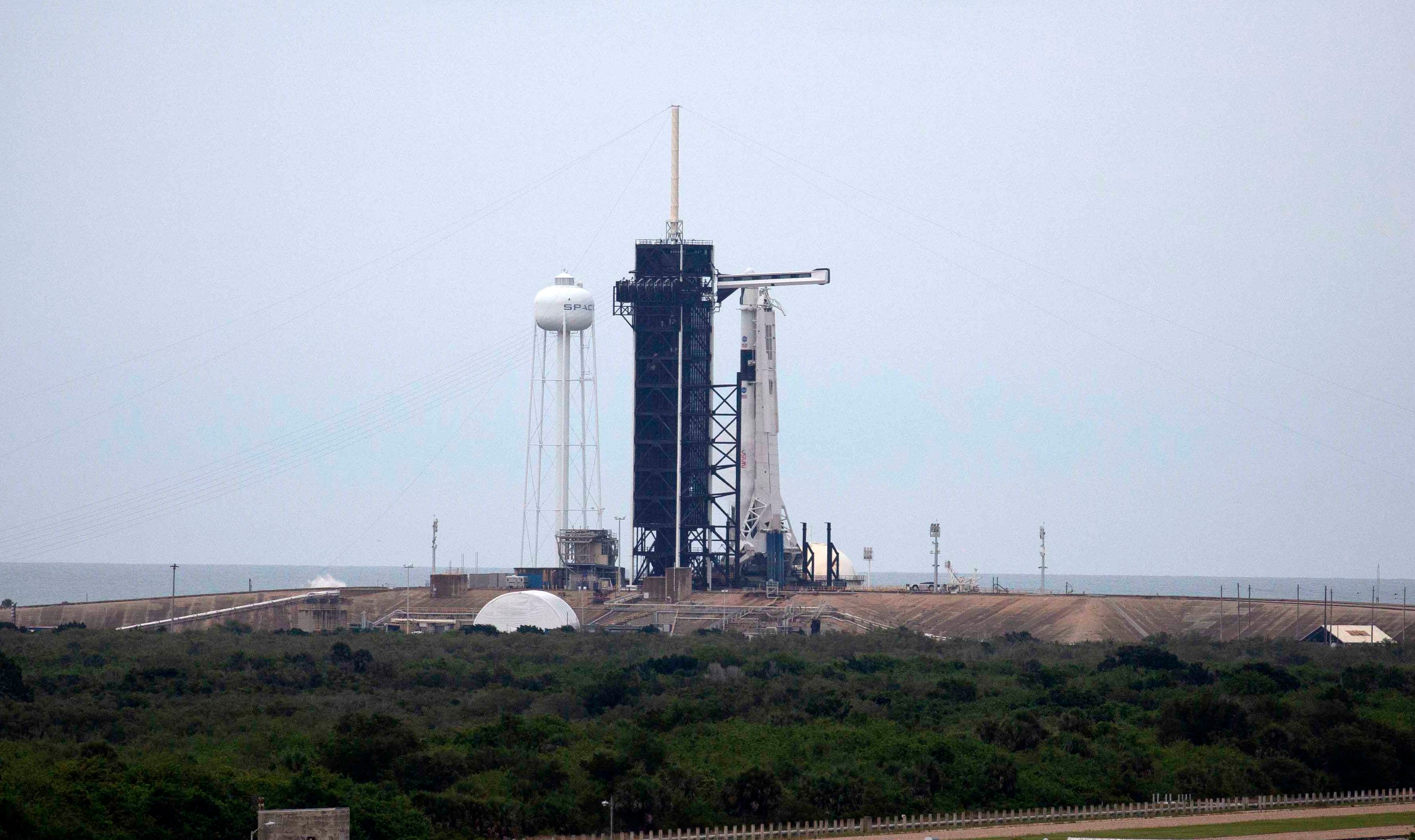Photos of giant claw ‘catching arms’ at SpaceX starbase fuel wild speculation online
Elon Musk claims ‘robot chopsticks’, or mechanical arms attached to SpaceX’s launch tower, will be used to catch rockets

Your support helps us to tell the story
From reproductive rights to climate change to Big Tech, The Independent is on the ground when the story is developing. Whether it's investigating the financials of Elon Musk's pro-Trump PAC or producing our latest documentary, 'The A Word', which shines a light on the American women fighting for reproductive rights, we know how important it is to parse out the facts from the messaging.
At such a critical moment in US history, we need reporters on the ground. Your donation allows us to keep sending journalists to speak to both sides of the story.
The Independent is trusted by Americans across the entire political spectrum. And unlike many other quality news outlets, we choose not to lock Americans out of our reporting and analysis with paywalls. We believe quality journalism should be available to everyone, paid for by those who can afford it.
Your support makes all the difference.A massive, claw-like structure photographed at a SpaceX launch site in south Texas has triggered speculation online that it could be a part of the company’s “Mechazilla” rocket-catching system.
The structure – initially spotted by photographer Nic Ansuini for the news website NASASpaceFlight – is reportedly situated near a construction site where engineers are working on a rocket-catching tower for SpaceX.
Mr Ansuini posted photographs of the claw-like structure on Twitter on Sunday.
SpaceX had earlier said it was working to “catch” rockets using “robot chopsticks” or mechanical arms attached to a launch tower.
Teams are in the process of fitting the tower with hydraulic systems, fuel lines and actuator arms that will transform the massive structure into what the company’s founder Elon Musk nicknamed “Mechazilla”, likely derived from the “Mechagodzilla” character belonging to the Godzilla movie franchise.
The tower is expected to help guide used rockets back down onto the pad and could be part of a major test of the Mars-bound Starship craft later this year.
“SpaceX will try to catch largest ever flying object with robot chopsticks,” Musk posted on Twitter on 30 August, along with a video clip from the 1984 martial arts movie The Karate Kid.
It’s unclear whether the claws seen in the photographs will be a part of the tower’s quick disconnect arm or the “chopstick” catching system Musk mentioned.
A Twitter user who goes by the username “Erc X” posted an animation on the micro-blogging platform last month, showing a fully-operational tower “catching” a SpaceX Super Heavy booster as it returns from deploying a Starship to orbit. It then transfers the spent rocket to the launch stand.
In the animation, the actuator arms can be seen grabbing onto another Starship and stacking it on top of the Super Heavy rocket, after which a secondary arm moves into place once the two are stacked.
Musk responded to the tweet saying the animation was “pretty close” and adding that the rocket booster and arms “will move faster”.
“QD arm will steady booster for ship mate. And ship will be caught by Mechazilla too. As with booster, no landing legs. Those are only needed for moon & Mars until there is local infrastructure,” the SpaceX chief tweeted.
While some Twitter users speculate the claw-like structure in the recent photographs could be part of the mechanism that steadies boosters, some said the design may be part of the “chopstick” catching system.
Regardless of the function, it is expected to be part of the “Mechazilla” tower plan, according to NASASpaceflight.



Join our commenting forum
Join thought-provoking conversations, follow other Independent readers and see their replies
Comments